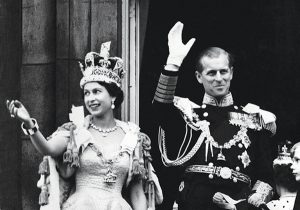Britain’s longest-serving monarch has died.
It feels like a death in the family. Born in 1926, the year that John Logie Baird gave the first public demonstration of television, and crowned in 1953, the year of Joseph Stalin’s death, the Queen has been with us for so long that only a sliver of the population can remember life without her. She has reigned for longer than any other British monarch, easily outstripping her great-great grandmother, Queen Victoria. Acting on the principle that “I have to be seen to be believed,†she has personally met innumerable people, and touched the lives of billions by radio and television. Who does not remember her Christmas broadcasts? Or the solace she provided during the Covid pandemic when she quoted Vera Lynn’s promise that “we’ll meet again.â€
Now she is gone.
The miracle of the monarchy is how it has survived in a democratic and egalitarian age. Everything it stands for — inheritance rather than merit and ascription rather than election — is the antithesis of everything we hold dear as a civilization. Yet the British monarchy has not only survived, it has thrived. It’s made none of the compromises of the bicycling monarchies of the Scandinavian world. Indeed, it has almost relished defying compromise.
How has this come about? In preparation for her job, the Queen was provided with a handbook on how to survive the acid of modernity. This was Walter Bagehot’s great book The English Constitution, published in 1867 at the height of Victorian brio. When she was a child, the vice-provost of Eton College, Henry Marten, visited Windsor Castle regularly to teach her about her constitutional duties, laying particular emphasis on Bagehot’s wisdom. Nothing about the experience was normal. Marten addressed the solitary princess as “gentlemen,†lecturing her as if she was a class of Etonians. Even more surreal was what, channeling Bagehot, he taught her: that Britain is a “disguised republic,†that the best qualification for a monarch is stupidity, and that the job is to spend life as a frivolous distraction from the real business of government.
Bagehot thought that statecraft was far too serious to be left to the masses. Rather, government needed to be left to a tiny elite of serious-minded men who understood the world. But how could you get the people to accept such a situation in a democratizing age? The answer lay in distraction by means of monarchy. Bagehot hoped that the people would focus on the splendid royals in their gilded carriages, leading the great parade, while “the real rulers are secreted in second-rate carriages.†“No one cares for them or asks about them, but they are obeyed implicitly and unconsciously by reason of the splendor of those who eclipsed and preceded them.â€
Bagehot also replaced the individual with the family at the heart of his drama. This was part of his distraction strategy. As he saw it, regular people — particularly women — cared 50 times more for a marriage than a ministry. Distraction also doubled as legitimacy: People were far more likely to obey a state with a human face than one that was a mere abstraction. By providing ordinary people with brilliant editions of universal facts — such as birth, marriage and death — the Royal Family also anchored the business of government in regular human affairs. It was part of an embourgeoisement strategy.
In Bagehot’s schema the royal family was to be transformed from a relic of aristocratic society into an embodiment of bourgeois virtues. Victoria’s job was to be both Empress of India and the acme of companionable marriage. The monarchy remains physically Victorian. The palaces and their decorations reflect the tastes of the queen-empress. The great events continue in their Victorian incarnations. The ceremonial uniforms of the guards are as Victorian as Gilbert and Sullivan operettas.
But Elizabeth II had to abandon Bagehot’s handbook and invent a new one all of her own. Nobody today believes that the Queen ruled as well as reigned — and if they did they would have rightly demanded change. The idea that monarchy is essentially a show is taken for granted. It is a distraction in the sense of a diversion rather than a disguise.
The family dimension to this show is widely celebrated. The monarchy is never more popular than when it is providing us with brilliant editions of life-cycle events such as births, marriages and deaths. Still, today’s monarchy has singularly failed in its attempt to project itself as a perfect middle-class family sitting at the apex of British society. Far from being role models, the Windsors are haunted by extreme versions of common family maladies — divorce, adultery, betrayal, hypocrisy. If we have celebrated fairy tale marriages, we have also watched in horror as they have descended into hellish acrimony.
The Queen’s genius was to understand that monarchy provides not distraction but a counterbalance to the imperatives of modern life. Clever courtiers like to emphasize the way she moved with the times and modernized the Firm, as she liked to call it. “Everything’s changed except the headscarf,†says one, leaving aside such little things as Windsor Castle and Balmoral. The Queen grasped Edmund Burke’s great dictum that, for a true conservative, the point of change is to stay the same, at least in the things that really matter. Monarchy is a restraint on modernity or it is nothing.
There will be much talk of the future of the monarchy in coming months as the first shock of the Queen’s death fades.
—Bloomberg
Adrian Wooldridge is the global business columnist for Bloomberg Opinion. A former writer at the Economist, he is author, most recently, of “The Aristocracy of Talent: How Meritocracy Made the Modern World.â€
 The Gulf Time Newspaper One of the finest business newspapers in the UAE brought to you by our professional writers and editors.
The Gulf Time Newspaper One of the finest business newspapers in the UAE brought to you by our professional writers and editors.

